Navajo Medicine Man Ceremony
Navajo Medicine Man Ceremony
The medicine man sits before a pile of hot coals spread out on the compacted red earth floor of his Hogan – the traditional home of the Navajo. “This is Native American church,” he tells me, pulling shiny black arrowheads and Golden Eagle feathers from his wooden medicine box, and twisting a thick translucent crystal before the flames.
Sweat beads on my forehead: medicine men are believed to see premonitions in the burning coals that divine the nature of a patient’s affliction. His eyes dilate – “I see a spider,” he says, “I see a dead man.” A few miles away we are surrounded by the detritus of modern America but here, in Navajo country, it’s as if I’ve slipped through the cracks into another world entirely.
Navajo Medicine Men
In many ways I have. Medicine men have been performing ceremonies like this on the Navajo reservation – a 27,000sqm sovereign state in the high desert of Arizona, New Mexico and Utah – for thousands of years, and they’re still used to this day to cure anything from addiction and depression to cancer and the common cold. They work too: stories of miraculous healing echo across this parched and desolate landscape, but there are warnings of powerful black magic practitioners too, called spirit walkers, who have the ability to curse and injure. The medicine man fixes me in his stare and my heart thunders: in the land of the Navajo, the power of the medicine man is real.
Inside the Hogan is warm, the room scented of damp earth and cedar; wood chips fizz on the fire and spiral sweet smoke to the stove hole in its centre. The medicine man wets a roll of cornhusk, and passes it to his wife behind him, her dark weathered skin turned away from us, shadowed in a sky blue shawl. Silently, she twists tobacco in the husk, as their grandson, Ira, his long black hair wrapped in a red bandana, plunges a fire stick into the hot coals and glows it bright orange with his breath. “Let’s smoke,” the medicine man says, puffing hard on the thick roll and cupping wisps of grey tobacco burn across his face and body. After Ira, it is my turn, I draw deep and try to repeat their movements, the smoldering tobacco spasming the back of my throat in violent coughs as the medicine man looks on, telling me to smoke harder, to cover myself more completely in the rough blaze.
Golden Eagle Feathers
“When we smoke,” he says finally, turquoise jewels glowing around his lined and sagging neck, “we talk about our problems. Tell the fire. Be honest.” I have never been to church before, never really prayed. But in this warm and quiet space, surrounded by meager farmlands and poor weather torn shacks scattered wide like seeds on the wind, I am compelled, maybe for the first time in my life, to speak only, and absolutely, from my heart. I talk of my family, my children, I talk instinctively without stopping in a way I’ve never done before. I ask to be a better man, to be stronger for them, to not carry my darkness into their lives. When I am done the medicine man fans me with Golden Eagle feathers, cupping cedar smoke across my face and neck, and then blowing a single shrill note through the collar bone of an eagle to purify me.
Afterwards the grandmother, in a soft Navajo voice, calls to the holy people to witness us. She speaks of her grandson, Ira kneeling beside me, she asks them to bless his feet that touch the earth, bless his ankles that let him move, his legs that support his weight. As she talks her voice becomes faster, and more intense. Minutes pass, wind rattles the outside of the Hogan, the fire burns low, but still she prays, growing in desperation until tears run down the funnels of her skin. I have never before seen an expression of such raw, unfiltered love. It is shocking, but infectious too: I look into the fire and a flood of emotion washes suddenly, and unexpectedly, over me. Ira sees me and smiles – “it’s like our therapy,” he says. “Afterwards there is no looking back. We start again.”
When the prayers are finished, the medicine man instructs Ira, and I, to leave the Hogan – “if there are stars or a moon,” he says, “take a breath.” Outside a soft breeze feathers us in cool air. We bury our hands in the ground’s red dust, pulling the earth over our bodies, and then extending our hands to the stars, bringing them back to our hearts. “Take it in,” Ira says, “just breathe it all in.”
The Beauty Way
Later that night, after the ceremony is finished and I am lying on the hard earth floor of the Hogan, farm dogs howling around me, I realise that I’ve never allowed myself to be truly humble before. Never actually fallen to my knees. But beside the medicine man’s fire, I let go. All pretenses of who I was, who I should be, dissolved. There was only the flames, the smoke and the earth beneath my feet. And as I let go, something amazing happened: I felt overwhelmed with love. I felt connected. “That’s the beauty way,” Ira, told me later, “with beauty before me may I walk, with beauty behind me may I walk, with beauty ahead of me may I walk, with beauty all around me may I walk. That’s what we Navajo believe.” Perhaps that’s also part of the power of the Medicine Man: as we kneel before his fire, we let go of our darkness. And in doing so, we transcend it. The first feathers of dawn rise above the high desert mesas, the spider and the dead man disappear, and I walk into the early desert light.
INFORMATION:
I was invited to witness this small family ceremony while travelling through the Navajo reservation. It is rare for a non-Navajo to be allowed to see this ancient practice first hand – they guard their culture from outsiders with a wise, and fierce, determination. I have shared my experience in the hope that it will inspire people to find out more about the Navajo, and care about the issues that are affecting them right now. The reservation is a beautiful place, but riddled with poverty and all the problems that come with it. Their way of life is under constant attack from unscrupulous mining industries, which damage their land and provide no benefit to their people. The threat of cultural assimilation into the dominant American ideology is ever present.
Ira, the grandson in this piece, is a young Navajo entrepreneur and one of the most inspiring people I’ve ever met. He owns a number of social enterprises on the reservation that aim to give Navajo kids training and employment, while, at the same time, teaching them about their native identity and traditional ways of life. If you’re inspired to find out more, go to his Facebook page, La Tinaja, and support his businesses – your money will be going to a good place.
Of the millions of people that come to the United States each year, only a tiny fraction ever consider visiting, and learning about, its first people. If you find yourself out west, I urge you to discover this ancient culture for yourself. Discover Navajo is a great resource for Navajo owned and operated tourism businesses on the reservation.

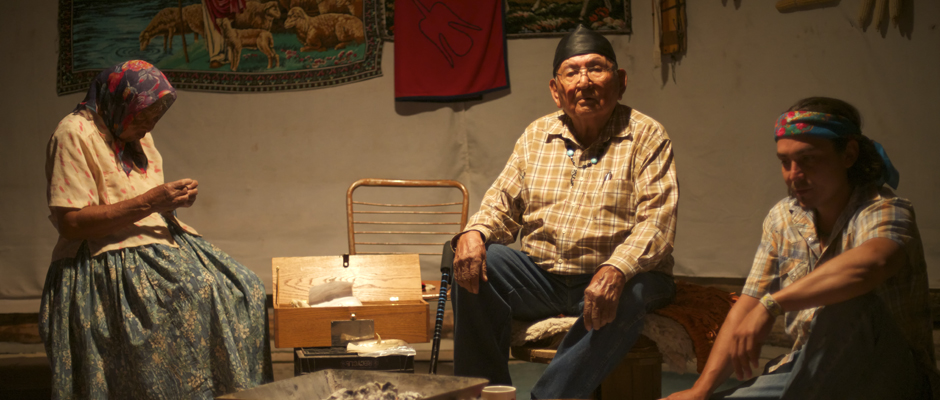


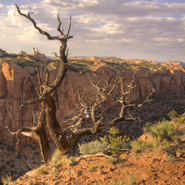


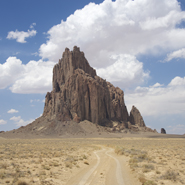


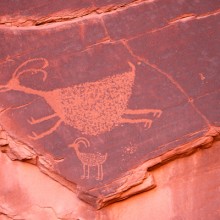




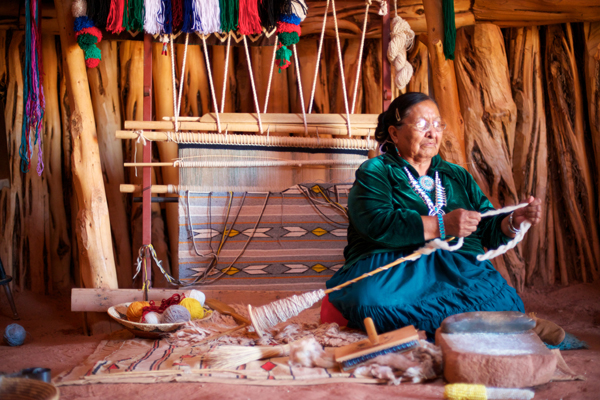
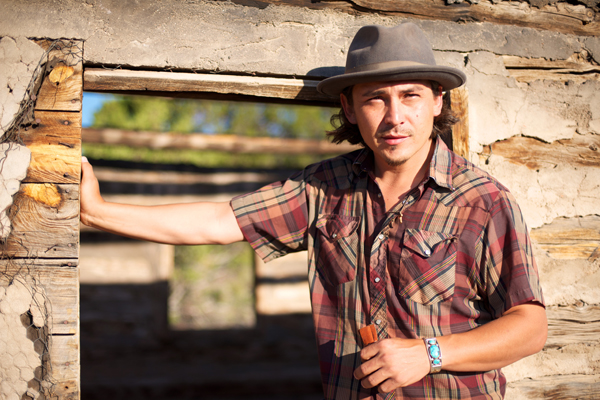

A truly inspiring journey and message.
Thanks so much for reading it mate, it was a real life changer … hope it can inspire other people too.
What an inspiration to find an article of this depth on the www. My connection to it came through Positive News. It’s the only ‘news’ that makes sense to me at this point.
The connection of indigenous people to the land and ancient wisdom is the solution to our present dilemma on Earth. Thanks, and please keep sharing your travels.
Thanks so much Sally, spending time with the Navajo was definitely one of the most inspirational things I’ve ever done. It’s great to hear you connected with it through Positive News – I love the ethos of what they do. It’s always a pleasure writing for them. Hope to see you back at the site soon. All the best, Aaron
Ari – your writings really touch me and one statement in particular really hit home, “not to carry my darkness into their lives”. That is such a pure and unselfish thought. Just think how much better our world would be if we all lived with that state of mind. Love you, Reid.
Thanks Reid! That’s actually one of my favourite lines too … and, I think, one of the big challenges of being a father. Not always easy though! Really appreciate you checking out the blog bro X
How can I get a hold of this medicine man from my wife she’s a Native American Navajo from the reservation and she needs some help with something that’s been on her for a while
Hi Michael, thanks for getting in touch … the medicine man in the picture I can’t get hold of any longer, but I did also meet another medicine man through a guy called Larry Holiday. He’s a Navajo too and does tours around Monument Valley. I don’t have his personal email but if you google his name he’ll come up. Good luck.
Medicine turtle Cherokee reservation Oklahoma this is very special stories thanks for sharing
Thanks for reading. One of the most profound and amazing experiences of my life.
I know this is a long shot.. but my dear friend has cancer and I was looking for a necklace or earrings or bracelet that’s blessed by an actual Native American medicine man.. I don’t have much money but I feel you need spiritual healing more than anything to help beat or conquer cancer not just today’s medicine.. I’ve been searching for a minute now and I’m not giving up please someone help me!!!!!